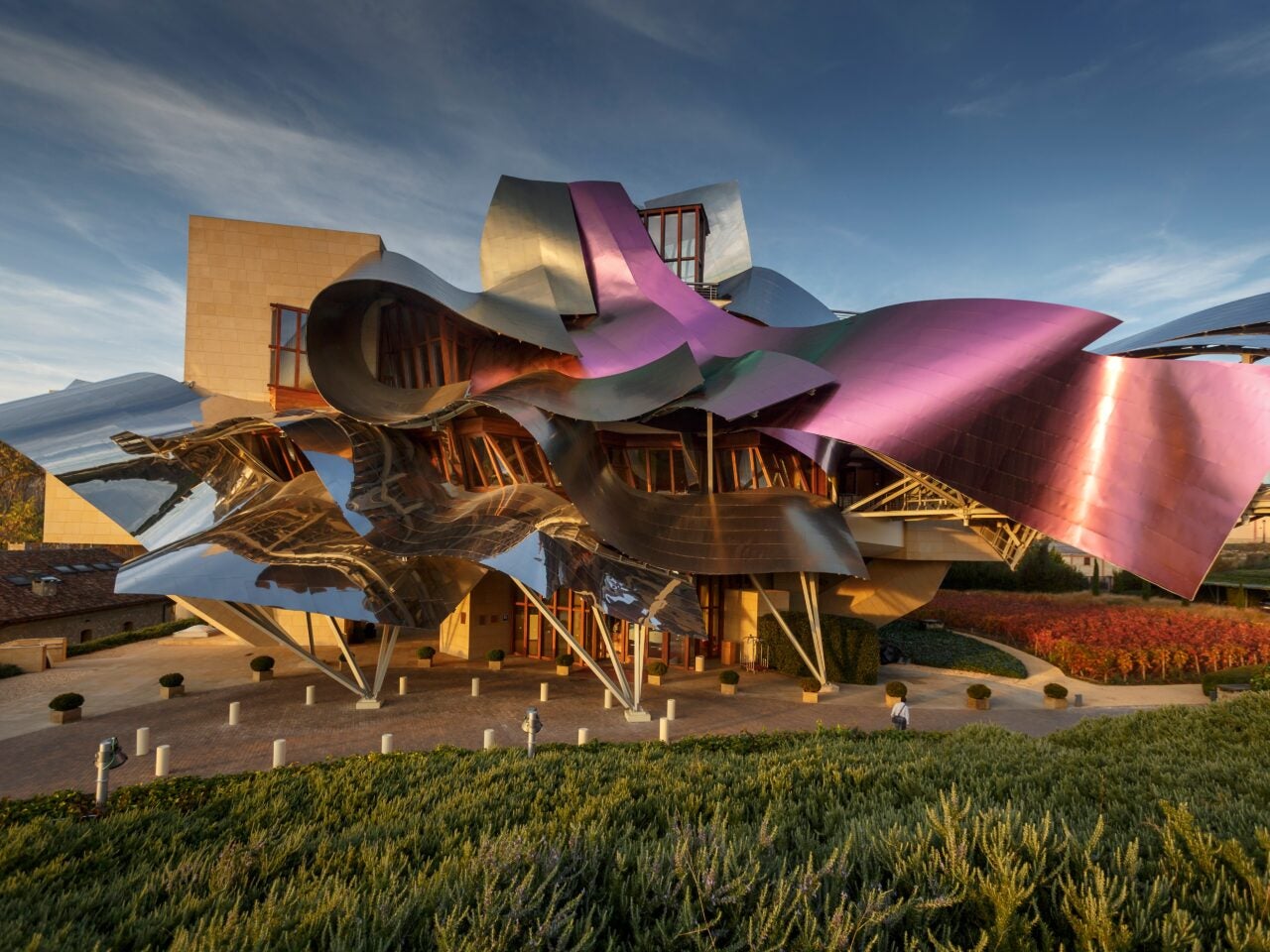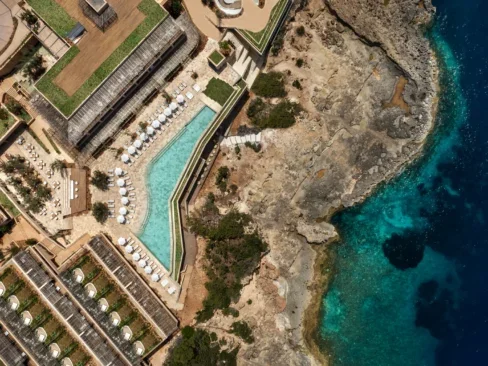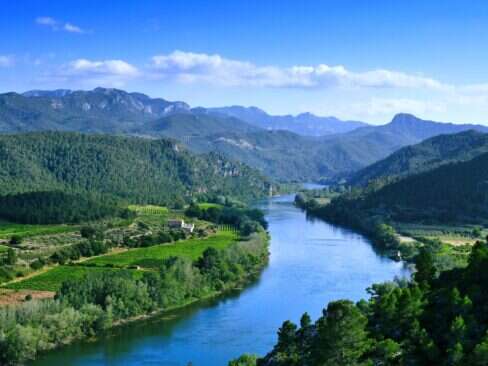Spain is home to some of the most beautiful wineries in the world. As the third-largest producer of wine globally — beaten only by France and Italy — Spain produces more bottles a year than the US, Argentina and Chile combined. Popularized by the Romans, Spanish wine has been produced since the first century AD, so after all those years it’s safe to say they know a thing or two about vinification.
Spain’s La Rioja province is by far the most renowned and celebrated of its wine regions, yet Rioja’s magnificent rolling hills and rich soil is by no means all Spain has to offer. Let’s not forget that Spain is not just the mainland, but also includes a wealth of islands. US presidents George Washington and Thomas Jefferson are both recorded as having been enthusiasts of Canary Island wine.
Having searched across Spain, from the wine rich Rioja to the mountain foothills of the Pyrenees, the cava capital of Penedès to the black soil of the Canary Islands, these are Spain’s most jaw-droppingly beautiful wineries.
The Marqués de Riscal – The City of Wine
When discussing Spain’s most beautiful vineyards, there is no better place to begin than The Marqués de Riscal (pictured above). Located in Elciego within the Rioja region, The City of Wine, as it is known, is a true monument to Spanish winemaking.
The original bodega was built in 1860 and contains “the treasures of Marqués de Riscal” (the cellar for some of the estate’s oldest wine). Further extensions were constructed in the 1880s in the Bordeaux style which today act as the home for the company’s premium winemaking.
While many vineyards attempt to disappear into the landscape, the Hotel Marques de Riscal, which sits at the center of the City of Wine, takes a different approach. The building was designed by Canadian architect Frank O. Gehry in a similar style to one of his other famous works—the Guggenheim Museum in Bilbao. This 21st Century avant-garde creation pays homage to its surroundings with its pink and silver titanium facade representing the wine and silver foil often found on the neck of a great bottle.
After a day of exploring The City of Wine, there’s no better way to wind down than booking a table at Restaurante Marqués de Riscal. The hotel’s Michelin star restaurant, led by Rioja-born chef Francis Paniego, is sure to be a pleasant end to a day among the vines.
Bodegas Ysios

The rocky ridge creates a microclimate that ensures the surrounding land is conducive to the growing of grapes / ©Bodegas Ysios
Remaining in the Rioja region, it’s difficult to decide which is more breath-taking, the long undulating structure at Bodegas Ysios or the Sierra de Cantabria mountain range which it overlooks.
Proving essential, the rocky ridge creates a microclimate that ensures the surrounding land is conducive to the growing of grapes. The ridgeline protects the vineyards from harsh weather brought south from the Bay of Biscay.
At Bodegas Ysios you will be greeted by an exquisite boutique winery designed by Santiago Calatrava, surrounded by small-scale vineyards. Walking through the vines you can discover some are over 100 years old, indicating a lasting respect for traditional methods.
After a tour of the vineyard, relax in the Laguardia Lounge where you are greeted by 360-degree views of the estate while sampling some of the premium Ysios vintages.
Blecua
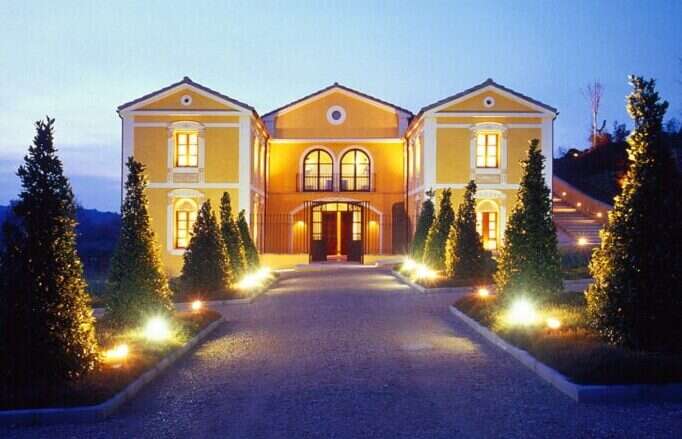
What remains on the site now is far closer to a 19th century Italian villa / ©Gonzalez Byass
In the northeast of Spain at the foothills of the Pyrenees, you will find a vineyard that exudes luxury to its very core. After over 10 years of success, in which sister winery Viñas del Vero grew into one of the most successful in the Somontano region, Blecua was opened for a single purpose: to produce only the highest end wine.
Blecua, known locally as Blecua tower, can be traced back to the 11th century when it was used as a retreat by French Benedictine monks. What remains on the site now is far closer to a 19th century Italian villa as opposed to a medieval retreat, yet it remains beautiful in its own right. Visualize an avenue of immaculately manicured topiary leading to a bold yellow facade.
[See also: The Best Spots in Spain to Soak Up Some Winter Sun]
At Blecua, only a single wine is produced, the aptly named “Blecua” which is the result of a triple selection of the best vineyards, bunches and barrels each year. Each vintage remains in the barrels for at least 20 months, after which they are only released if they meet the highest standards.
As luxury and Blecua go hand in hand, they have partnered with the local Michelin recommended restaurant Las Torres, who will provide a tasting lunch paired with several wines including Blecua.
https://www.vinasdelvero.es/
El Grifo
In the short-term, volcanic eruptions tend to have a disastrous effect on vineyards. Wait for the magma to cool, however, and you will find soil rich in minerals and nutrients. Canary Island wine is far from a new concept. In his play Twelfth Night, Shakespeare mentions “A cup of canary,” proving volcanic vintages have been a popular choice for at least 400 years.
After the eruptions of 1730—1736, wine began to be produced at Bodega El Grifo by digging small holes (Chabocos) through the top layer of lava to the soil below. Due to the hard winds that often blow over the Canary Islands, each vine is often protected by a small stone wall. Because of this, the vines in these fields are still tended by hand.
To this day the black soil at El Grifo is striking. The green vines dotted in neat rows across the torched charcoal earth prove unlike any vineyard on the Spanish mainland. At El Grifo, you will also discover a museum dedicated to the curious wine history of Lanzarote.
Llopart
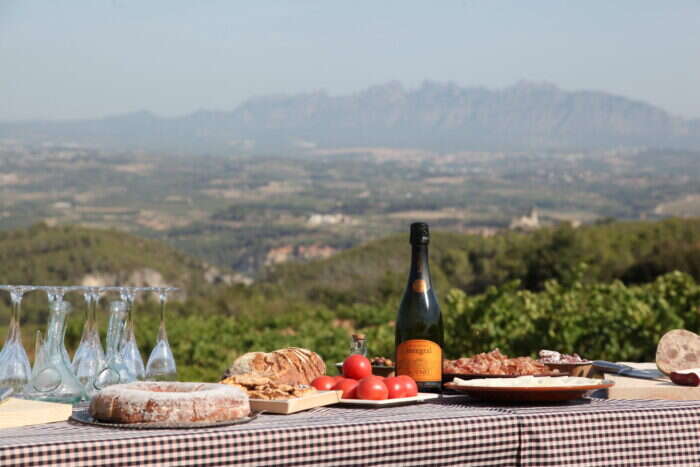
Visit a remote location with a pre-set table and tasting experience / ©LlopartYou can’t go on a wine trip to Spain and not visit a vineyard that specializes in sparkling wine. The Llopart family live and breathe winemaking and have been doing so for some time. There is written evidence in Latin of Llopart ancestor Bernardus Leopardi being granted vineyards in 1385.
The Llopart family winery produces organic Spanish sparkling wine using the traditional champagne method. When entering the 14th century Gothic cellar in one of the most traditional country houses in the Penedès wine region, its history is undeniable.
Options for tour experiences at Llopart are endless and range from quick group tours to in-depth, private affairs that are tailor-made to your wants and needs. You decide how you would like to get around the vineyards. Electric bikes to horse and carriages, 4x4s or even a helicopter transit to a remote location with a pre-set table and tasting experience, the choice is yours.
For more information on luxury travel in Spain, visit spain.info






